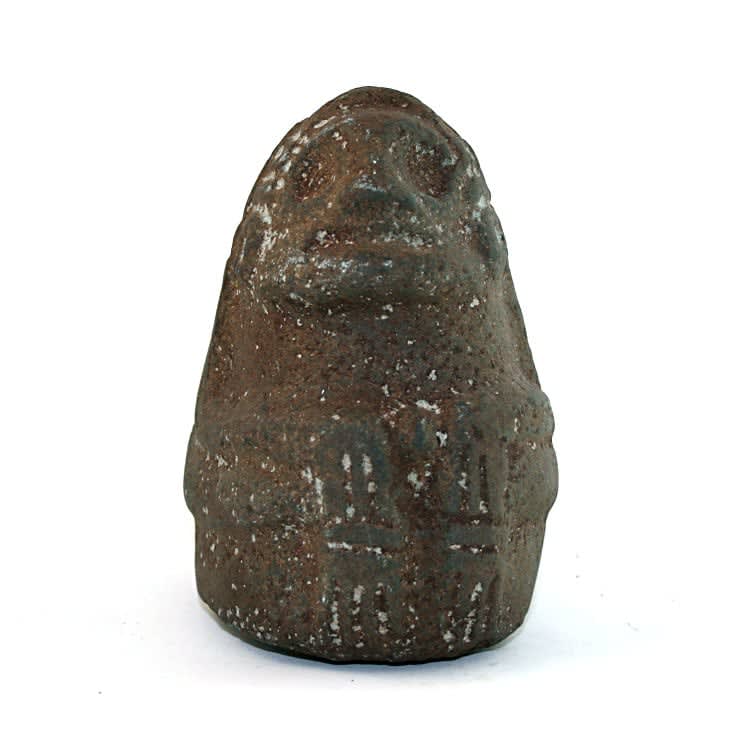Taino Stone Figure of a Shaman, 1000 CE - 1500 CE
Green Stone
4 x 5.5 x 6.5
PF.1222a
Further images
The Taino flourished in the Caribbean between c.1200-1500, until the Spanish conquest wrecked havoc on their way of life. At the time of Columbus's arrival in 1492, there were five...
The Taino flourished in the Caribbean between c.1200-1500, until the Spanish conquest wrecked havoc on their way of life. At the time of Columbus's arrival in 1492, there were five Taíno kingdoms or territories on Hispaniola, each led by a principal cacique (chieftain) to whom tribute was paid. At this date, the largest Taíno population centres may have contained around 3,000 people or more. It was an incredibly sophisticated agricultural society with a developed cosmology and ritual system. A great deal of social interaction, trade and religious ceremony seems to have been conducted at the ball games and the ball courts were similar in layout to others discovered in Mesoamerica and lowland South America.
There are several possibilities as to the identity of the figure portrayed in this stone sculpture. It may represent a Taino shaman and this hypothesis seems to be supported by the squatting position. Shamans were believed to be able to communicate with the souls of the dead when transported into a trance-like state through the inhalation of the hallucinogenic cohoba. During this ritual they crouched, with their knees bent and their legs folded in beneath them. Alternatively the figure may represent a zemi- the physical manifestation of a Taino god, spirit or ancestor. It bears many of the hallmarks of such figures, namely the skeletal appearance, circular eyes with sunken orbits and wide gaping mouth. The spine and the ribs are clearly visible on the reverse, carved in bold abbreviated strokes. Ancestor worship was fundamental to Taino culture, particularly to the political authority of the caciques, who were deified upon death and regularly venerated by their successors. Whilst an element of mystery will continue to surround this object and its precise function- it continues to fascinate and impress us today.
There are several possibilities as to the identity of the figure portrayed in this stone sculpture. It may represent a Taino shaman and this hypothesis seems to be supported by the squatting position. Shamans were believed to be able to communicate with the souls of the dead when transported into a trance-like state through the inhalation of the hallucinogenic cohoba. During this ritual they crouched, with their knees bent and their legs folded in beneath them. Alternatively the figure may represent a zemi- the physical manifestation of a Taino god, spirit or ancestor. It bears many of the hallmarks of such figures, namely the skeletal appearance, circular eyes with sunken orbits and wide gaping mouth. The spine and the ribs are clearly visible on the reverse, carved in bold abbreviated strokes. Ancestor worship was fundamental to Taino culture, particularly to the political authority of the caciques, who were deified upon death and regularly venerated by their successors. Whilst an element of mystery will continue to surround this object and its precise function- it continues to fascinate and impress us today.





